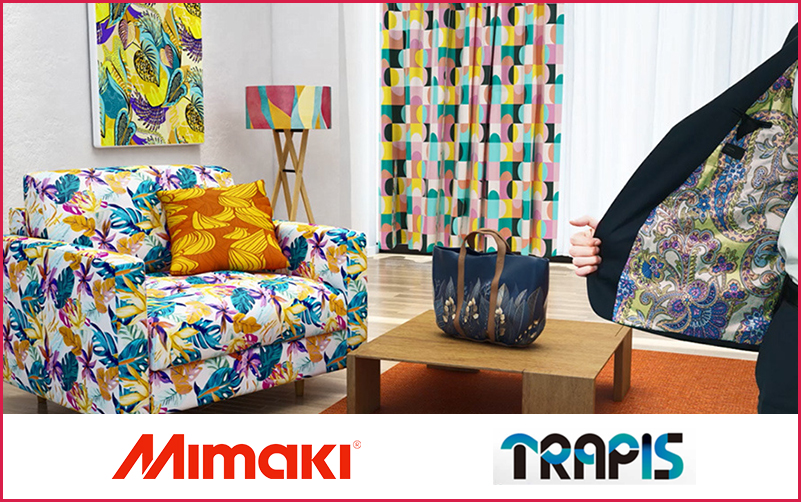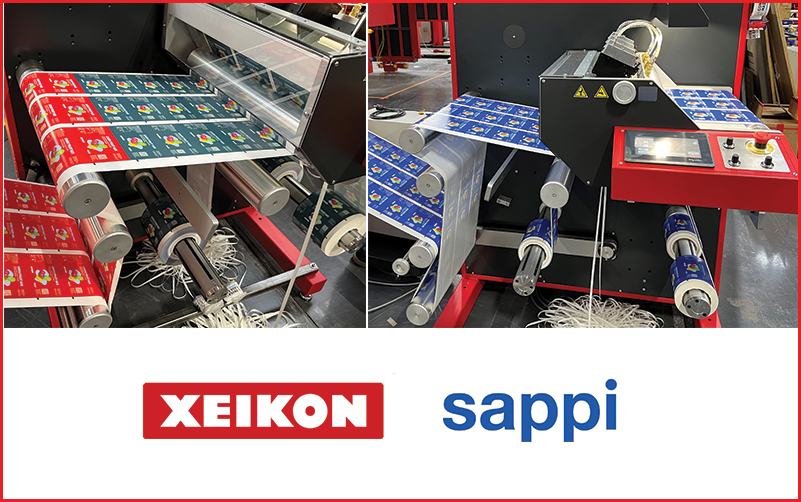
Revamped textile printing method ! Next-generation textile printing system “TRAPIS”, friendly to the environment and people
18 March 2024: Mimaki Engineering Co. Ltd. has announced launch of “TRAPIS”, environmentally and people-friendly next-generation textile printing system, which is a commercialized version of the “textile pigment transfer printing system” that was exhibited at ITMA in June 2023. Prior to its product launch, it will be exhibited for first time in FESPA Global Print Expo 2024 to be held in March 2024 where it will propose “Textile Printing made Incomplex” that can cut wastewater amount by about 90% (compare to conventional method), “easily operated by anyone” and “Installable in any locations”.
“TRAPIS” is the company’s pigment transfer textile printing system, whose name is derived from words “Transfer”, “Pigment” and “System”. The system consists of ur inkjet printer, dedicated ink, dedicated transfer paper, and a dedicated transfer machine made by a European manufacturer recommended by us.
The conventional textile dyeing method generates a large amount of wastewater mixed with chemical substance (about 14.5 liters per square meter in the case of digital dye printing*1) due to pre- and post-treatment of textile, which is considered an environmental problem, In addition, the dyeing process is complex, requiring specialized skills and knowledge, and the investment of dyeing equipment requires large-scale wastewater treatment facilities, limiting the location where they can be installed.
*1 Digital dye printing generates significant amount of wastewater by textile printing conveyor belt washing and fabric washing after dye fixation (steam) (by our original research)
In TRAPIS, a design printed on a special paper is transferred to the fabric using a heat transfer machine to complete the textile printing process. Therefore, the process generates almost zero wastewater (only water in the waste ink generated by printer’s automatic maintenance), and even including wastewater generated in the transfer paper manufacturing process, wastewater is cut by approx. 90% compared to conventional digital dyeing systems. Since the system does not require a large space or wastewater treatment facilities like conventional system, it can be installed in a small space, and textile printing business can be conducted at the forefront of fabric supply distribution (store, design offices, etc.)
Furthermore, in conventional textile printing, it is necessary to use different dyes (ink types) by types of textiles. TRAPIS, however, can print on a wide range of textile with one type of ink. Therefore, it is not limited to dyeing factories that specialize in textile printing, but enables dyeing business to operate in any locations, on a multi-variety of textile, in a short-run as required, thus adapting the global dyeing industry’s demand for sustainability.
TRAPIS will be compatible with the printing of each textile materials and is scheduled to go on sale in June 2024. We expect to sell 100 units per year (worldwide) in the textile and apparel market, including fashion apparel and home textile applications.
www.mimaki.com






